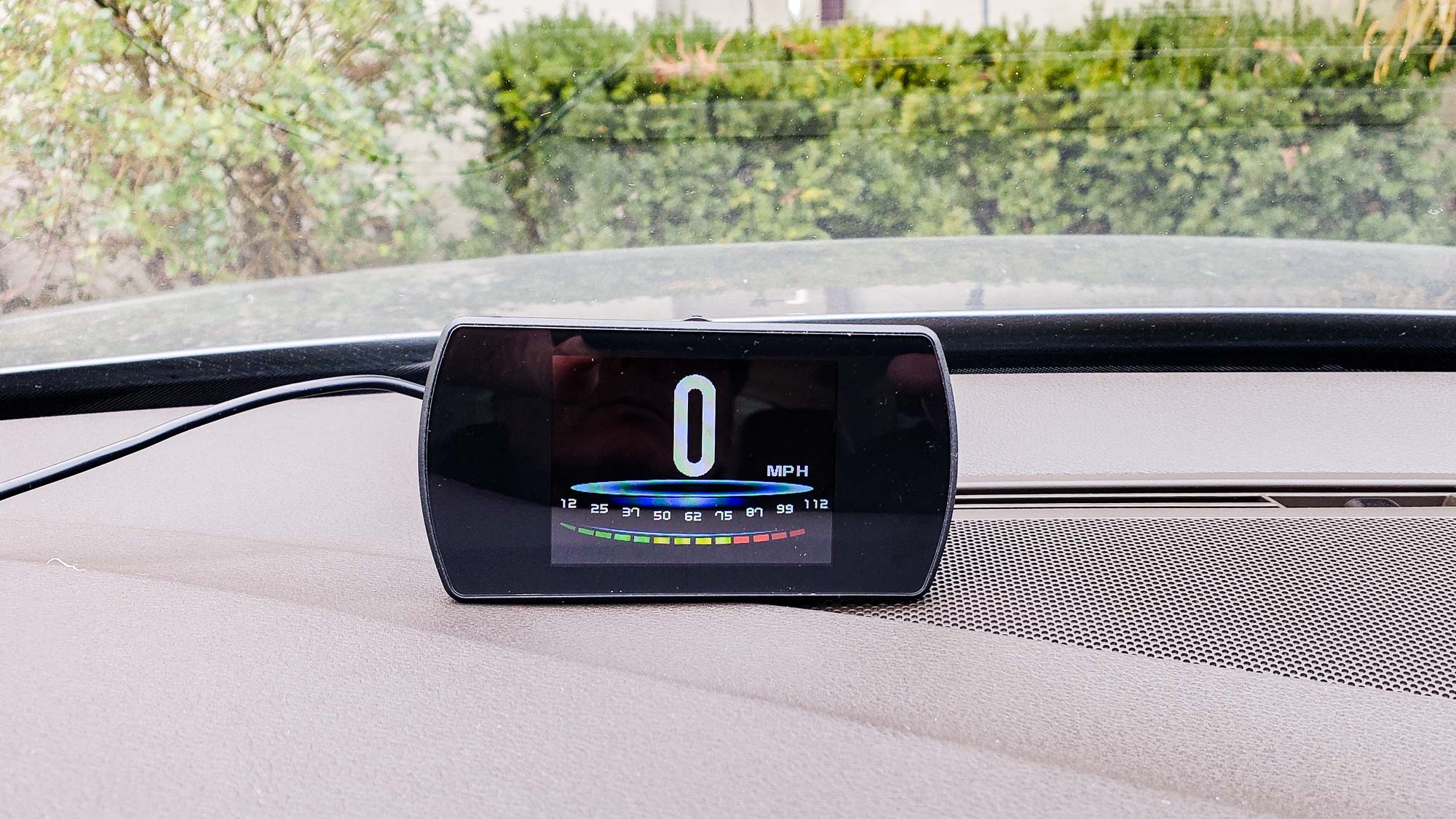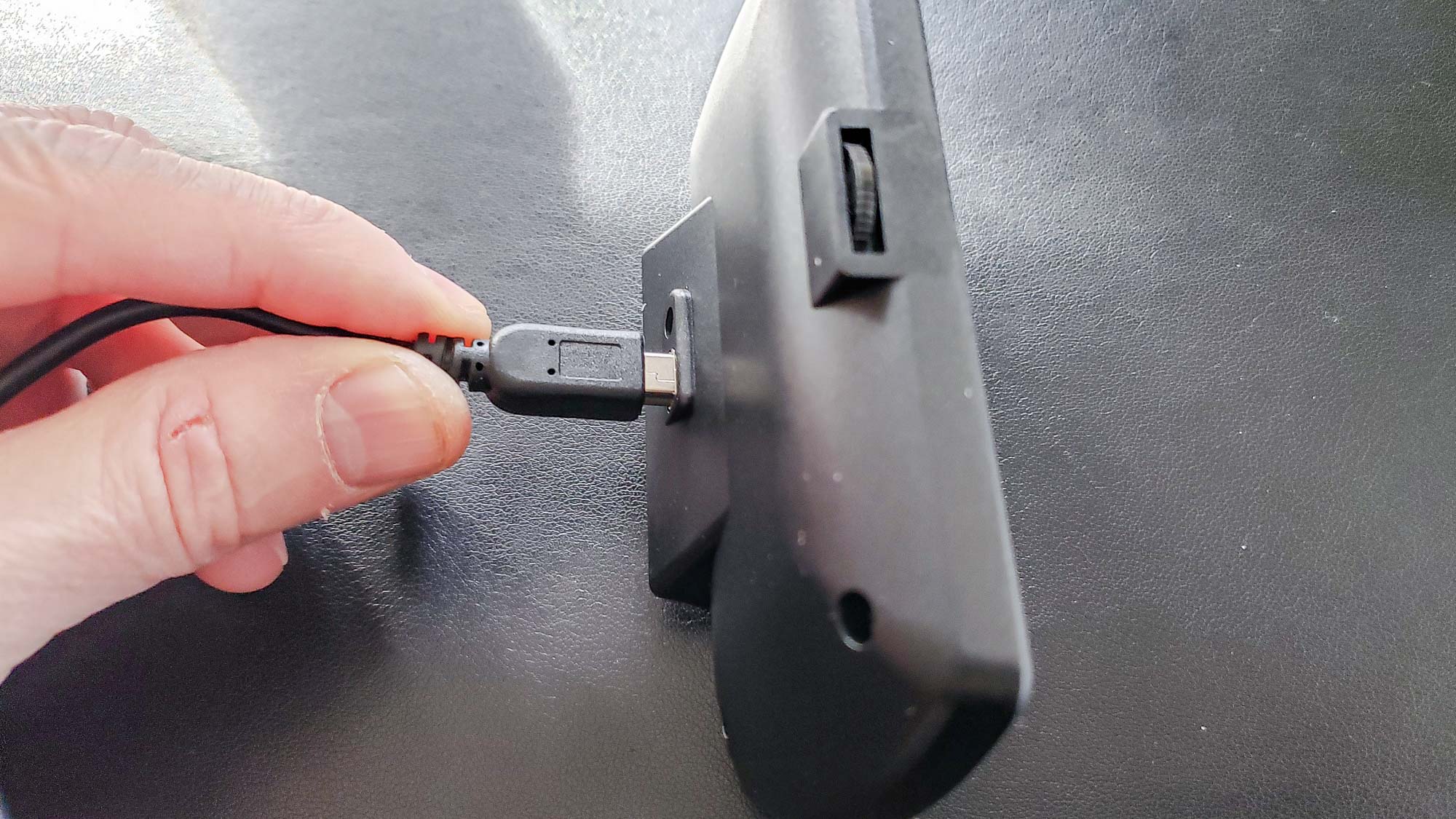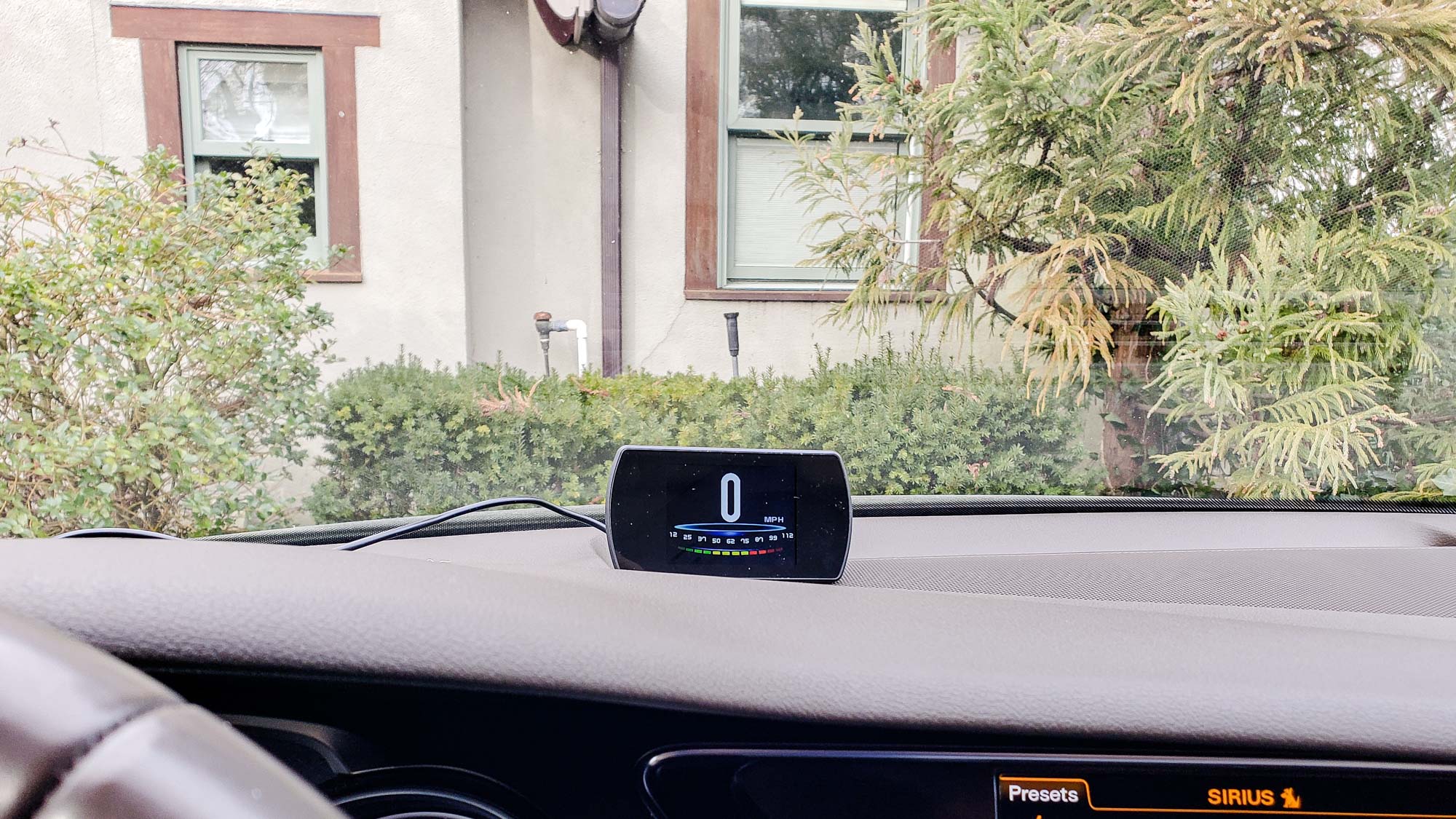Tom's Guide Verdict
By using a GPS receiver instead of OBD data, the AceCar T800 shows a limited set of automotive details. But it does manage to add things like longitude and latitude, as well as performing acceleration and braking tests.
Pros
- +
Small
- +
Doesn’t obstruct view of road too much
- +
Inexpensive
- +
Uses GPS
Cons
- -
No OBD feedback
- -
Small screen
- -
Lacks phone integration
- -
Six-month warranty
Why you can trust Tom's Guide
Size: 4.3 x 1.9 x 0.7 inches
Weight: 1.9 ounces
Power: Cigarette lighter outlet
Display size: 2.8-inches
Color/Monochrome: Color
Number of parameters displayed: 6
Alarms: Yes
It may not show as many parameters as other heads-up display units, but the AceCar T800 displays the basics: speed, compass heading as well as longitude and latitude.
Among the least expensive HUDs it can run acceleration and braking tests, although it lacks basics like on-board diagnostic warnings and the warranty only lasts six months. Overall, the T800 can provide automotive insight that won’t distract the driver, but that's not enough to earn it a spot on our list of the best car heads-up displays.
AceCar T800 review: Price and availability
This $46 heads-up display is among the least expensive devices of its kind. AceCar makes several other automotive add-ons, including the $48 Tesla Model 3 HUD that works with Tesla’s entry-level motor and the slightly pricier Model Y.
AceCar T800 review: Design and features
The AceCar T800 goes its own way when it comes to design, with a direct view display rather than a windshield projection setup. At 2.2-inches high, it only slightly obstructs the driver’s view of the road ahead. It also weighs 1.9-ounces, making it one of the lightest heads-up displays available.

The bottom of the T800 flares out to create a secure base that is attached to the dashboard using the included adhesive strip. It includes an extra installation strip in case you swap cars before you switch to a new HUD.
Its center of attention is the T800’s 2.8-inch display, which is tiny compared to the likes of the PHUD180BD’s 5.5-inch display. It’s powerful enough for most conditions and has a light sensor for automatic brightness adjustments.
Like the Sherox 3.5” HUD, the T800 does without an on/off switch, which is a key design misstep. On top is the HUD’s control wheel that cycles through the choices with each press. There’s a mini USB port that connects to the vehicle’s cigarette lighter outlet for power. Unfortunately, the wire’s profile is round and thicker than other HUD cables, making it harder to stash in dashboard spaces.
Get instant access to breaking news, the hottest reviews, great deals and helpful tips.

Because it uses a GPS receiver, the AceCar T800 can’t tap into the auto’s OBD data for things like engine speed. Its main screen shows the car’s speed numerically and as a curved bar underneath. Dig a little deeper and you can see anything from the number of satellites it’s in contact with, to the accessory voltage and the compass heading.
It can even show longitude and latitude for the off-roaders among us but doesn’t show the car’s position on maps or provide directions. The lack of OBD data also means it can’t show diagnostic faults.
In addition to the car’s speed and direction, the T800 can warn the driver of driving too fast and low voltage. Performance enthusiasts will also be happy to know it offers tests for acceleration and braking.
AceCar T800 review: Setup
The beauty of using GPS signals for speed and location is that it should work with any car with a cigarette lighter outlet. After plugging the T800’s power cord into my car’s outlet, the system immediately came to life.
Unlike many other HUDs, the T800 only comes with a six-month warranty – half as long as the others. Plus, like the Sherox 3.5” HUD, the T800’s documentation is sorely lacking. The four page fold open booklet barely covers the basics.
AceCar T800 review: Performance
Once I plugged the T800’s power cable into my 2014 Audi A4 AllRoad’s cigarette lighter outlet, the screen started up. At less than 2-inches tall, the T800 was among the least obtrusive to the driver’s field of view — but its display was still viewable.It took a moment for the GPS electronics inside to fire up and connect with orbiting satellites.

I really liked the fact the T800’s screen shows the speed in large white numerals with a bar graph for speed below it. It generally showed accurate speed readings but they stopped as soon as I ducked into a tunnel. An issue caused by the lack of connection to the GPS satellites above.
Changing the displayed units required using the tiny control wheel at the top, and the unit shuts itself off after switching off the car’s engine. It’s not uncommon on car HUDS, but I do miss having an on/off switch and the ability to set a unit to stay on for an extra few minutes — something the Pyle PHUD180BD has on offer..
The acceleration and braking tests were a good addition for those concerned with squeezing a little extra performance out of their vehicle. Though, sadly, the T800’s GPS receiver misses out on an opportunity to deliver automotive data and show you where you are with digital maps.
AceCar T800 review: Bottom line
The AceCar T800 is the heads-up display to get if you don’t need on-board diagnostic feedback. While limited the GPS receiver can offer up data on your speed, longitude and latitude. Though we still wish it had some sort of navigation support — even if it’s as simple as showing where you are on a digital map.
Performance-focussed drivers will be pleased about the acceleration and braking test feature, while the low price and limited obstruction means it’s a useful companion to keep on the road. That said we can’t help but wish the screen could be a little bigger, and the warranty a little more robust.
Brian Nadel is a freelance writer and editor who specializes in technology reporting and reviewing. He works out of the suburban New York City area and has covered topics from nuclear power plants and Wi-Fi routers to cars and tablets. The former editor-in-chief of Mobile Computing and Communications, Nadel is the recipient of the TransPacific Writing Award.


